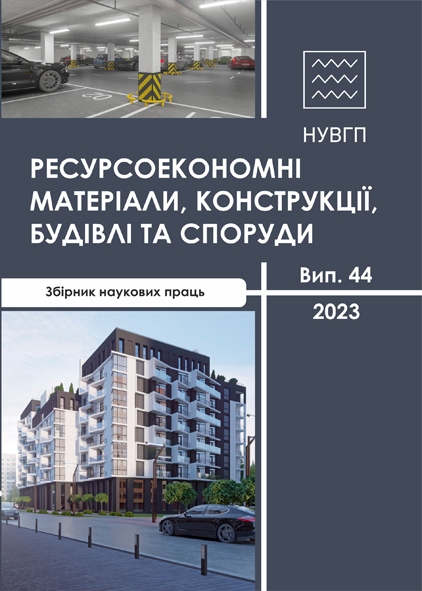EXPERIMENTAL AND NUMERICAL STUDIES OF THE STRESS-STRAIN STATE OF A REINFORCED CONCRETE DOUBLE-HINGED ARCH MADE OF HIGH-STRENGTH CONCRETE
DOI:
https://doi.org/10.31713/budres.v0i44.16Abstract
The article analyzes the works of foreign scientists covering the state of experimental and theoretical research on reinforced concrete arches, in particular: the scope of application of reinforced concrete arch structures in construction; stress-strain state; review of experimental studies of reinforced concrete double-hinged arches. The design of the prototype is described, the materials and their main physical and mechanical characteristics are specified. The test procedure for the experimental arch is described, test schemes with the placement of measuring devices and their loading modes are shown. The operation of a two-hinged reinforced concrete arch made of high-strength quick-setting concrete was experimentally investigated, which made it possible to determine the features of the stress-strain state of the belt sections and the nature of the development of deflections and cracks under single static loads. The results of experimental studies of a reinforced concrete double-jointed arch without tensioning made of C90 class concrete are presented. For the prototype of the arch, the diagrams of the dependence of "load - concrete deformation", "load - reinforcement deformation", "load - deflection", "load - displacement of supports", and diagrams of the dependence of the crack opening width and the number of cracks in the arch belt on the loads were constructed. The results of a numerical experiment on the calculation of an experimental double-hinged reinforced concrete arch under a single short-term load by the finite element method in the LIRA-SAPR are presented. The data obtained from the numerical experiment were compared with the data obtained from the experimental study of the arch. Based on the results of experimental and theoretical studies of the stress-strain state of a reinforced concrete arch made of high-strength concrete, conclusions were formulated.

